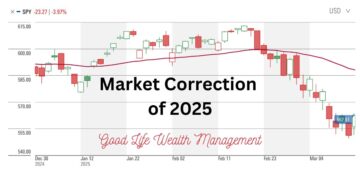This week, we are adding Convertible Bonds to our Premiere Wealth Management portfolios. This will shift 2-6 percent of portfolios from equities to our Alternative Investments sleeve. What are convertible bonds and why now?
Convertible bonds and are unique in that they have an option to convert from a bond into shares of stock of a company. Why would you want to do that? Let’s say a $1,000 bond has an option to convert it into 20 shares of stock. That would give a convert price of $50 a share. If the stock price stays at $40 a share, you would just let the bond mature and get back your $1,000 in principal. But if the stock price rises to $60 a share, you could convert your $1,000 bond into 20 shares. Then you could sell the shares for $60 a share, or $1,200. And while you wait, the bond pays interest.
Benefits of Convertible Bonds
Why do companies offer convertible bonds? There are a couple of benefits to the company:
- Convertible bonds typically pay lower interest rates since there is also potential upside for investors. This saves the company on interest costs versus issuing regular bonds.
- If the bonds do convert to stock, the company issues new shares and does not have to use cash to pay back the loan. Imagine borrowing $100 million and then paying it off by issuing stock!
- Compared to issuing new shares right away, a convertible bond delays diluting existing shareholders for several years. The interest expense is deductible for the company, whereas paying a stock dividend would not.
Here are the benefits for investors of convertible bonds:
- Convertible bonds can offer upside potential to participate in equity growth, but also with some of the downside protection of bonds. Therefore, they have an asymmetric return profile, unlike the linear return of stocks.
- Over the long-term, the convertible bond market has produced equity-like returns, but with less volatility. From 1995 through 2019, Convertible Bonds returned 8.99% versus 10.22% a year for the S&P 500 Index.
- According to Calamos Investments, as of May 13, 2020: “Since 1995, there have been four periods when convertible bonds reached a comparable level of cheapness as is seen today… Each of the previous periods was followed by rising valuations.”
Other Considerations
What are the risks of convertible bonds?
- Companies who issue convertible bonds can be lower credit quality, and more than half do not carry a credit rating. Some of these bonds will default.
- The volatility of convertibles can be closer to stocks than it is to high quality bonds like Treasury Bonds. Once the stock price is above the convert price, the price of the bond will be about as volatile as the stock.
How to invest in Convertible Bonds?
Because Convertible Bonds are closely related to equities, I consider them more of a substitute for stocks rather than fixed income. For this reason, we reduced equities to purchase a Convertible Bond Fund. I would recommend buying a fund rather than individual bonds. The fund can research the credit quality of unrated issuers and will diversify into a large number of bonds.
The fund we are adding has a 27-year track record and a five-star rating from Morningstar. Here is the most recent quarterly fact sheet on the fund. We will invest in the Institutional Share class, which has a lower expense ratio. Typically, investors would need $1 million to buy the institutional shares, but I can buy shares for my clients as a Registered Investment Advisor.
Why now?
We have had a very strong rebound in stocks markets since the lows of March. While there are a lot of reasons for optimism, the economic recovery from the Coronavirus seems to be priced into stocks. Bond yields are near zero, and offer little return potential compared to stocks. In this environment, I would like to add alternative investments that might offer returns better than bonds, but with less downside risk than stocks.
Currently, we have 10% allocated to Alternatives, using Preferred Stocks and a Hedge Fund replication strategy. Adding Convertible Bonds, our target weighting in Alternatives will be to 12-16 percent. No one can predict what markets will do in the near future. What we can do is to diversify our sources of return and risk. We can evaluate which investments have offered effective risk-adjusted returns historically and how they might work today. If you have questions about investing during the Coronavirus, please send me a message.
Past performance is no guarantee of future results. Investing in convertible bonds carries risk of loss.







